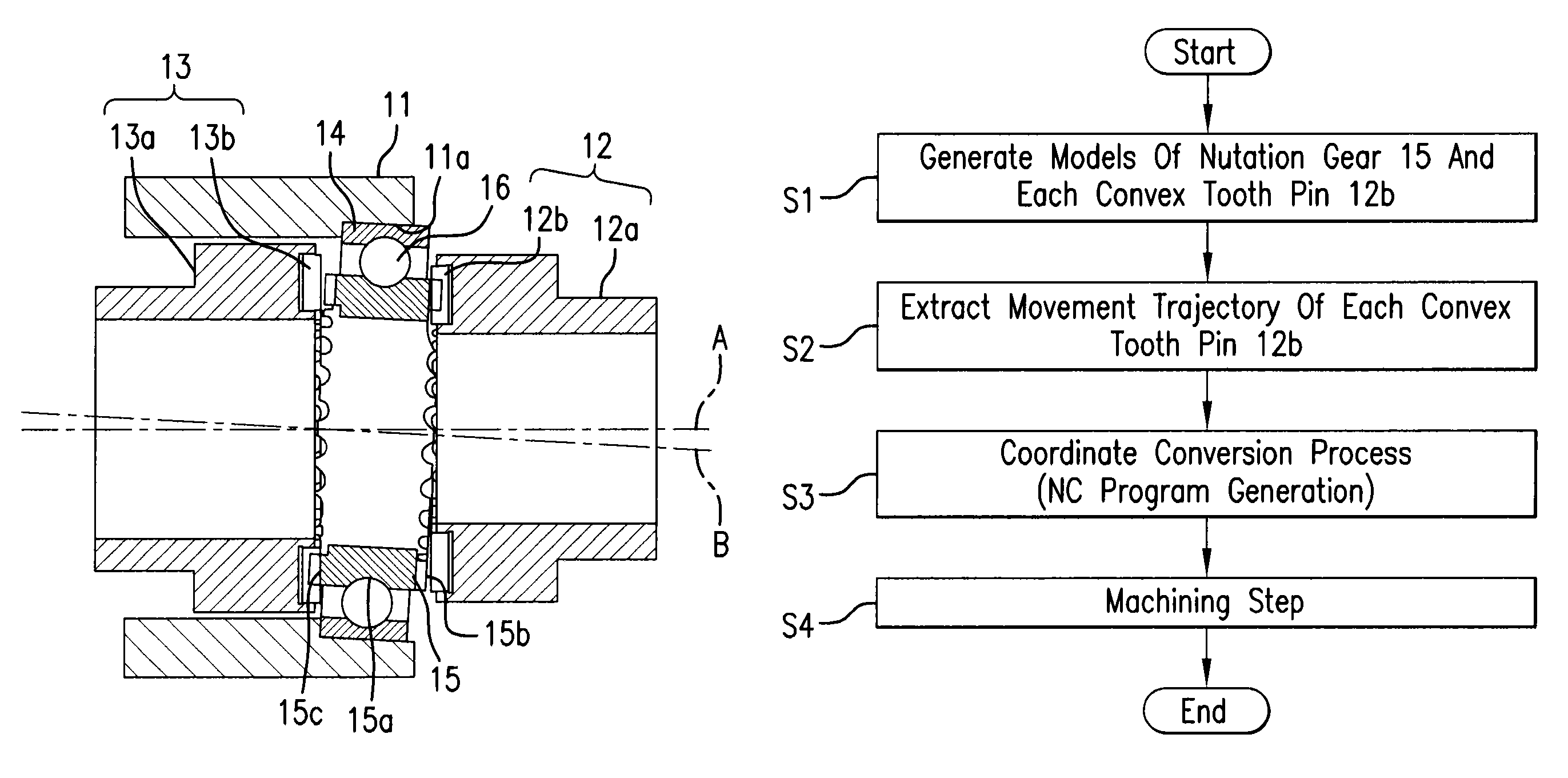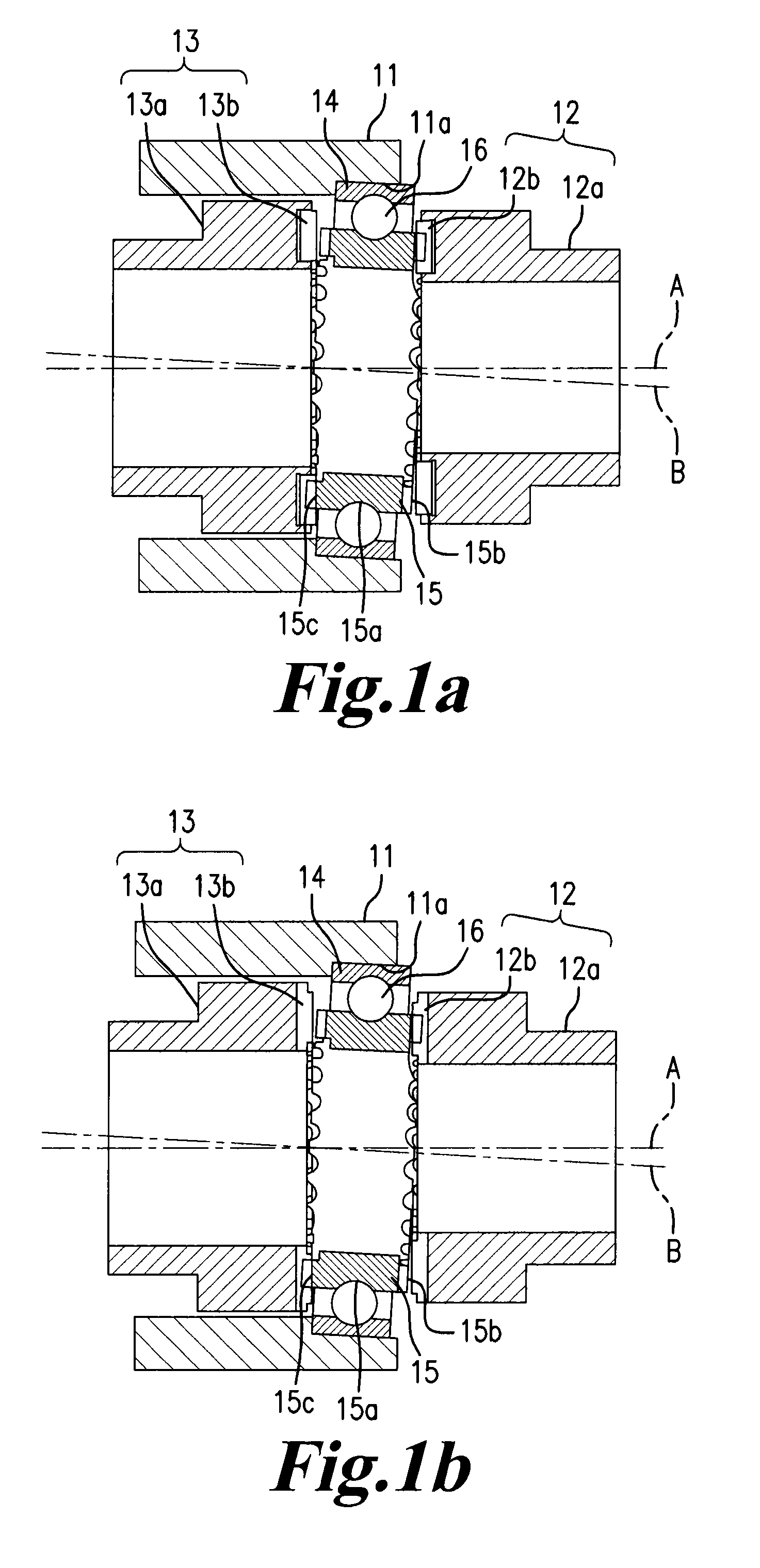Processing method for concave-convex gear
a processing method and concave-convex gear technology, applied in the direction of gear teeth, gear teeth, gear-teeth manufacturing apparatus, etc., can solve the problem of difficult machining, and achieve the effect of increasing the ming gear and the concave-convex gear, reducing size, and increasing strength
- Summary
- Abstract
- Description
- Claims
- Application Information
AI Technical Summary
Benefits of technology
Problems solved by technology
Method used
Image
Examples
first embodiment
Five-Axis Configuration (Three Linear Axes and Two Rotation Axes) (First Example of Omission of Fourth Rotation Axis)
[0055]A machining method and machining device for a nutation gear of a nutation gear set according to a first embodiment will be described with reference to FIG. 1 to FIG. 9. The machining device in the present embodiment shows the case of a five-axis configuration having three orthogonal linear axes and two rotation axes. In the first embodiment, movement along a fourth rotation axis is decomposed into movement along a sixth indexing axis and movement along a third linear axis.
(1) Configuration of Nutation Gear Set
[0056]The configuration of the nutation gear set that uses the nutation gear that is a machining object of the invention will be described with reference to FIG. 1 to FIG. 4. Here, FIG. 1(a) shows a case where convex tooth pins 12b and 13b are respectively separately formed from a fixed shaft body 12a and an output shaft body 13a, and FIG. 1(b) shows a case...
second embodiment
Five-Axis Configuration (Three Linear Axes and Two Rotation Axes) (Second Example of Omission of Fourth Rotation Axis)
[0096]A machining method and machining device for a nutation gear of a nutation gear set according to a second embodiment will be described with reference to FIG. 12. The machining device in the present embodiment shows the case of a five-axis configuration having three orthogonal linear axes and two rotation axes. As in the case of the first embodiment, the fourth rotation axis is omitted. However, in the present embodiment, movement along the fourth rotation axis described in the first embodiment is decomposed not into movement along the sixth indexing axis and movement along the third linear axis but into movement along the sixth indexing axis and movement along the second linear axis.
[0097]Here, in the present embodiment, “model generation” (S1) and “trajectory extracting step” (S2) in the first embodiment are the same. That is, the movement trajectory of the con...
third embodiment
Four-Axis Configuration (Two Linear Axes and Two Rotation Axes) (Omission of Second Linear Axis and Fourth Rotation Axis)
[0102]A machining method and machining device for a nutation gear of a nutation gear set according to a third embodiment will be described with reference to FIG. 7, FIG. 8 and FIG. 13 to FIG. 15. The machining device in the present embodiment shows the case of a four-axis configuration having two orthogonal linear axes and two rotation axes. The fourth rotation axis and the second linear axis that are described in the first embodiment with reference to FIG. 7(a) and FIG. 7(b) are omitted. Specifically, as in the case of the first embodiment, movement along the fourth rotation axis is decomposed into movement along the sixth indexing axis and movement along the third linear axis, and, in addition, movement along the second linear axis is decomposed into the first linear axis and the third linear axis.
[0103]Here, in the present embodiment, “model generation” (S1) an...
PUM
| Property | Measurement | Unit |
|---|---|---|
| torque | aaaaa | aaaaa |
| relative movement trajectory | aaaaa | aaaaa |
| length | aaaaa | aaaaa |
Abstract
Description
Claims
Application Information
 Login to View More
Login to View More - R&D
- Intellectual Property
- Life Sciences
- Materials
- Tech Scout
- Unparalleled Data Quality
- Higher Quality Content
- 60% Fewer Hallucinations
Browse by: Latest US Patents, China's latest patents, Technical Efficacy Thesaurus, Application Domain, Technology Topic, Popular Technical Reports.
© 2025 PatSnap. All rights reserved.Legal|Privacy policy|Modern Slavery Act Transparency Statement|Sitemap|About US| Contact US: help@patsnap.com



